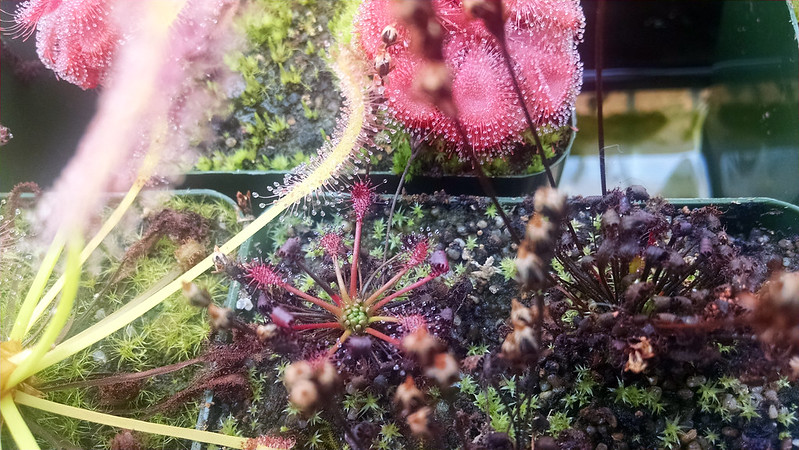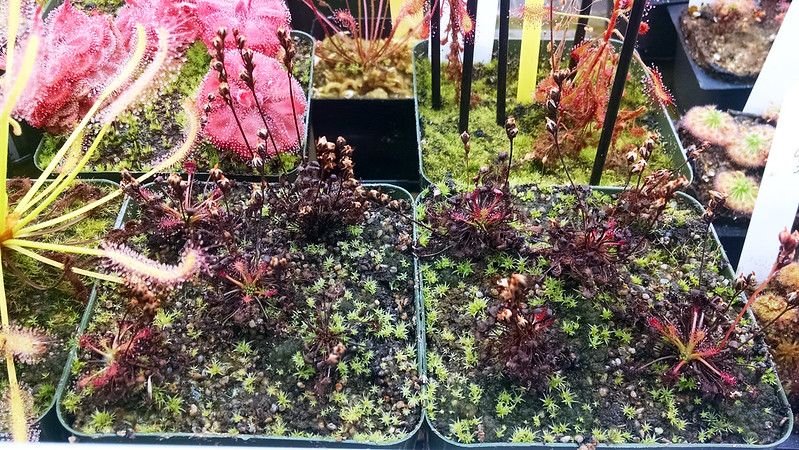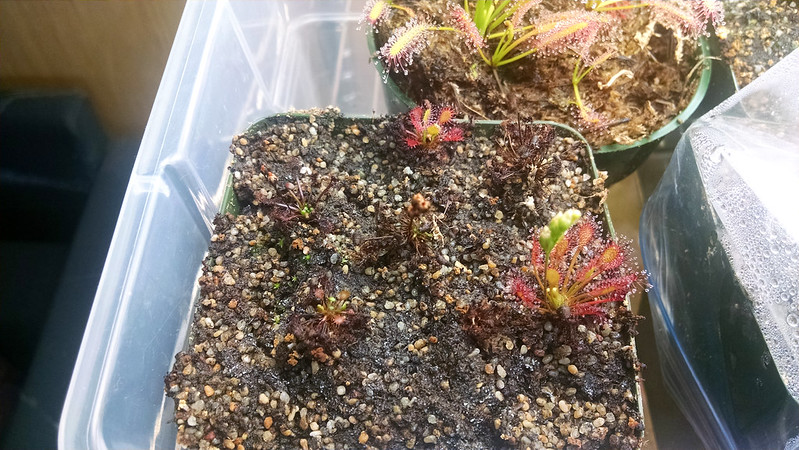This
is part of a series of posts describing my experiences with different
species, their culture requirements, and photos of their growth in my
collection. The full series can be read here, or by species at the Series page
Earlier this week I mentioned that my
Drosera intermedia 'Cuba' have formed hibernacula for winter, and are going dormant. They look pretty quiet right now.
 |
| Dormant D. intermedia 'Cuba', 12-11-14. |
 |
| Dormant D. intermedia 'Cuba', 12-13-14. |
However, during full active growth, it can be a really lovely, if somewhat diminutive, sundew. It can acquire a deep maroon color, and gets quite dewy under high light conditions.
 |
| D. intermedia 'Cuba' in flower, 4-22-14. |
|
This was one of the first species I started from seed, and they had really high germination rates. It's a tropical cultivar of
D. intermedia that stays on the small side. They also grow really quickly when fed regularly – it was about 4 months from germination to flowering with these guys. I fed them my
regular beta fish food, and they responded really well.
When it came to repotting, however, results we
a lot more mixed. When the seedlings were very small I transferred about half of them to a new pot, and overall they did okay. A few months later I tried repotting mature plants, and lost about 25% of them. They had very small, thin roots which I think were easily damaged. However, I didn't use a humidity tent in the process, so I don't know if that would have improved survival rates.
 |
| Repotting losses, 8-10-14. |
In all I think this is a pretty good beginner sundew. Easy to start from seed, quick-growing (with food), and very pretty under high light. The small size makes them very easy to fit into a collection, though a bit fiddly to work with.
The Breakdown
- media: Standard 1:1 peat and sand, although they also did fine in long-fiber Sphagnum moss.
- light: As much as you can provide. Plants can turn deep, striking red in high light.
- water: Tray method is appropriate, doesn't mine the tray occasionally drying out.
- temperature: Staying above freezing is important. I also noticed some heat stress in the middle of summer when temperatures were around 90 F (32 C).
- feeding: Regular feeding is important when plants are seedlings. If they are allowed to set a lot of seed without being fed some plants may die back a bit. Less food does mean more red color though.
- propagation: Easy to start from seed, high seed set when mature. In a colder climate this plant could act as an annual. No experience with leaf cuttings; root cuttings would probably not work.




No comments:
Post a Comment